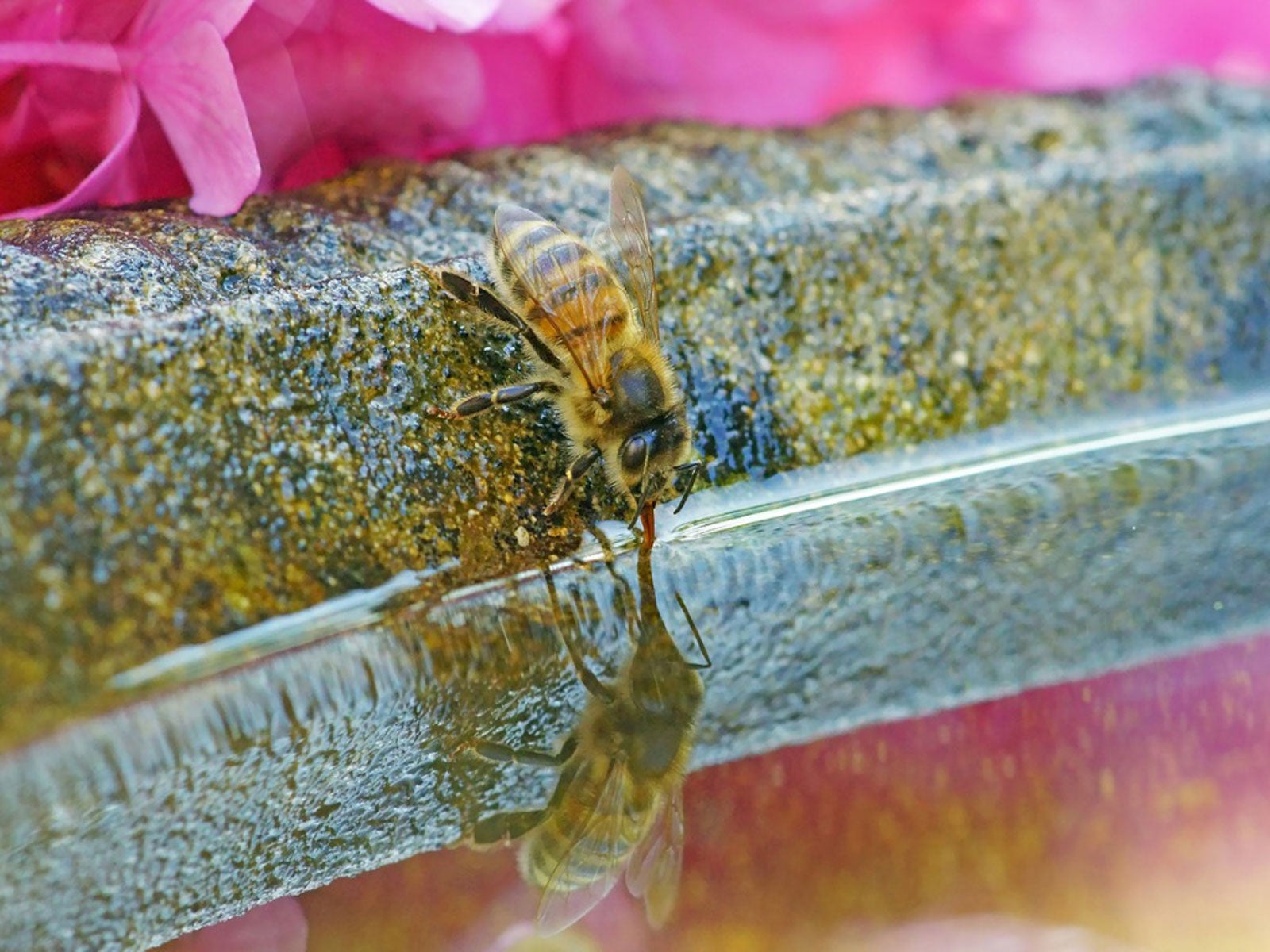Bee Bath Ideas: Making A Bee Bath For Your Garden


Attracting pollinators to the garden is an essential aspect of the creation of a productive growing space. Without bees, many farmers would be left with fields full of unpollinated plants. It is easy to understand why both large scale growers and those at home would want to learn more about keeping pollinating insects healthy and happy.
In recent years, many growers have brought special attention to the needs of bees. Included in this are their need for shelter, nectar, and the often-overlooked need for water.
Honeybee Bath Info
The inclusion of a bee bath for gardens is an excellent way to ensure bee needs are being met throughout the growing season. Initially, some may find the concept of a honeybee bath to be somewhat silly.
Like all animals, however, bees do need water in order to survive. Since pollen and nectar from flowers contain very little water, gardeners can assist them by making a bee bath.
How to Make a Bee Bath
Before starting, it will be important to decide where to place a bee bath. It is common to find bees seeking water near swimming pools and near the edges of bird baths. Making a bee bath can help resolve this issue. Since the honeybee bath will be visited frequently, it is best to find an out-of-the-way location.
Once it has been determined that the garden bee bath is a reliable source of water, these flying insects will return with frequency. In deciding how to make a bee bath, the options are limitless. Bee bath ideas abound online but can be easily customized to fit the unique needs of your own garden.
Creating a bee bath for gardens starts with the selection of a container. These can be either deep or shallow. While shallow containers may dry out more quickly, those which contain more water may potentially attract unwanted insects, like mosquitoes. For this reason, you’ll likely need to perform daily upkeep tasks, regardless of the type selected.
Sign up for the Gardening Know How newsletter today and receive a free copy of our e-book "How to Grow Delicious Tomatoes".
Those making a bee bath will also need to gather some additional materials. This includes items such as dried sticks, pebbles, or rocks. These items should be placed in and around the water as a safe landing place for drinking insects. Doing so will help these beloved pollinators feel secure in using the honeybee bath.
Once established, the bee bath in your garden is guaranteed to be buzzing with excitement.

Tonya Barnett has been gardening for 13 years. Flowers are her passion. She has transformed her backyard into a cut flower garden, which she regularly chronicles on her YouTube channel http://www.youtube.com/@tonyawiththeflowers.